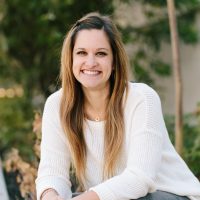At first glance, I don’t exactly have a lot in common with Marc Spector, the protagonist in Disney’s latest Marvel tv series, Moon Knight. Marc is a middle-aged Jewish man whose resume includes being a Marine, CIA operative, and mercenary while currently serving as the avatar of an Egyptian god and working to manage the dissociative identity disorder (DID) he developed in response to childhood trauma. I, on the other hand, am a 39-year-old Caucasian/Native American woman with no religious ties who’s never been inside a pyramid.
Despite our very real differences, it’s been a long time since I’ve related so strongly to a character, for you see, like Marc, I grew up in a household marked by trauma and abuse. While I didn’t develop DID, I did seek other forms of mental escape, specifically in stories.
It started with the books my mother read to me…I memorized these simple stories of right and wrong and lessons learned and told them to myself over and over while hiding in my room and or lying in bed at night, too anxious to fall asleep. While there was always something exciting about hearing a story for the first time, there was also a great deal of comfort to be found in knowing how the tale would end, and at a time when very little in my life was predictable, retelling these stories to myself offered much-needed familiarity.
Something in me must have realized that if I was able to read books on my own, I wouldn’t need to wait until my mother was available to read to me…I could read whatever I wanted, whenever I wanted. I taught myself to read when I was just shy of four-years old, and I read everything I could get my hands on, losing myself between the well-loved pages of countless library books.
But I didn’t just read about the characters…I became them, play-acting and bringing them to life, developing different mannerisms and creating accents for each one. I’d disappear into my room, the woods behind my house, or the barn and act out the stories I read. I knew these characters weren’t real, but I also knew I felt safer with them than the flesh-and-blood people I lived with.
As a precocious girl whose mind was filled with fantastical tales, it was no wonder I progressed from reading other people’s stories to creating my own. I made up stories based on tropes from my favorite childhood books and told them to myself while riding my bike or my horse, conjuring worlds, creating magic systems, and designing characters with specific personalities and physical traits. My storylines were constantly evolving and could be paused and picked up again whenever I needed them…they were always there waiting for me, and as a lonely teen who felt damaged and unwanted, it was such a relief to return to something familiar where I was never mistreated.
Some of the characters in my made-up stories became so special to me that I started writing about them, fearful I might somehow lose them if I limited record of their deeds to nothing more than my own memory. I threw myself into these miniature novels, hand-written on loose-leaf paper I stapled together before the days of computers. I found both friendship and freedom with these characters whose lives I could slip into anytime I needed an escape, taking my made-up identities on and off like changing clothes, allowing me a modicum of control in my otherwise chaotic life.
Given this, it’s no surprise I grew up to become an author, and I often think about the origins of my creativity—unlike Marc and his multiple identities, I somehow managed to always know my characters and stories were products of my own imagination. While encouraging breakthroughs in mental health continue to be made, healthcare practitioners still have yet to understand why people develop certain responses to trauma, as five people can experience similar childhood maltreatment and develop five different coping responses…one of which might be DID, but another of which might be writing books featuring made-up characters and fantasy worlds.
Moon Knight did a wonderful job of handling Marc’s mental health challenges, and while I doubt it’s the sort of representation Disney planned on, it’s been so encouraging to see a character turn inwards as a response to trauma, struggling to make sense of something beyond comprehension. I’m forever grateful for the imagination I developed as a result of my own painful childhood, and while I wish it had been born of something other than necessity, I now do my best to use it in service of creating stories for others who find themselves in need of a safe mental escape.







Read 0 comments and reply